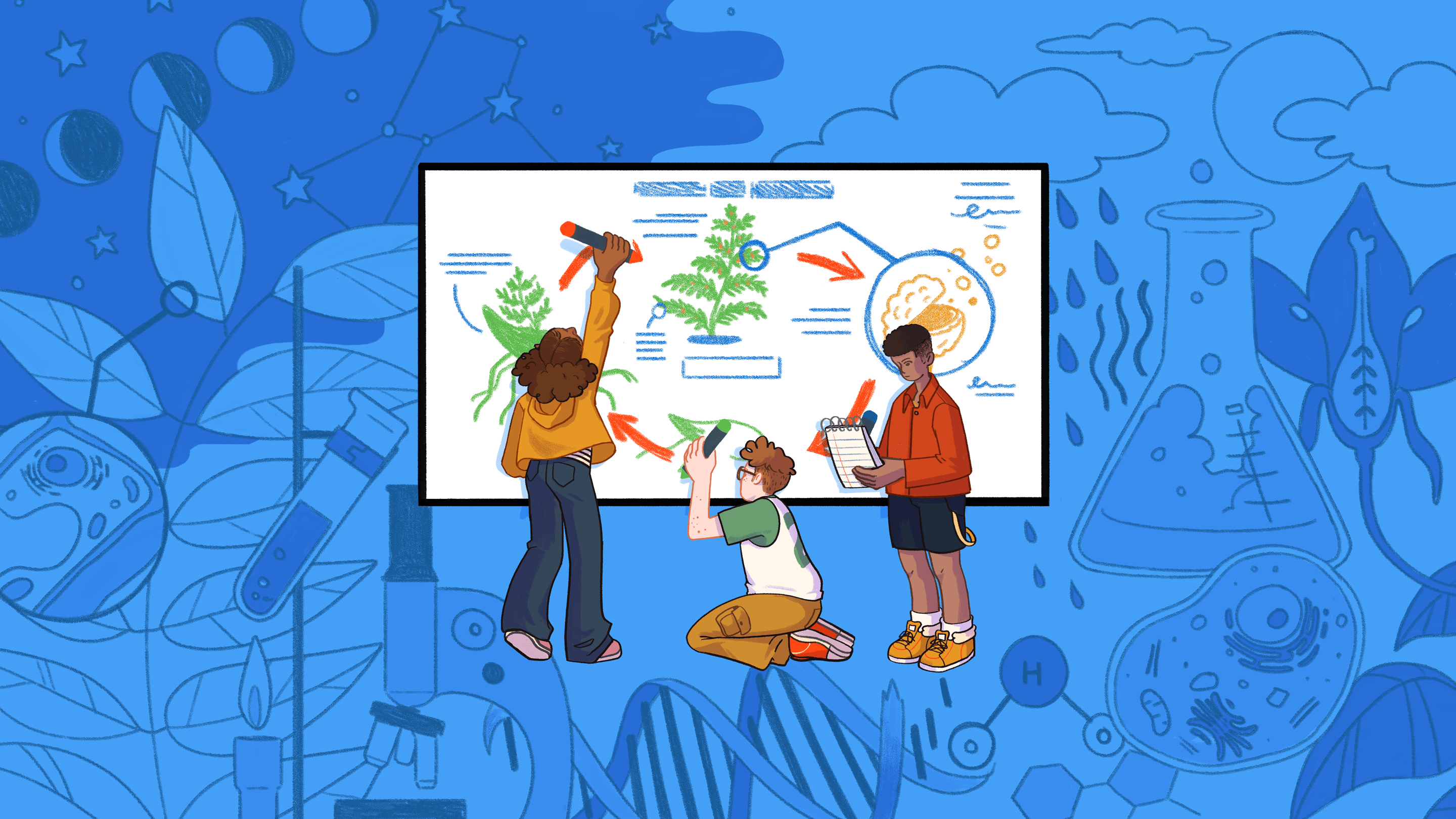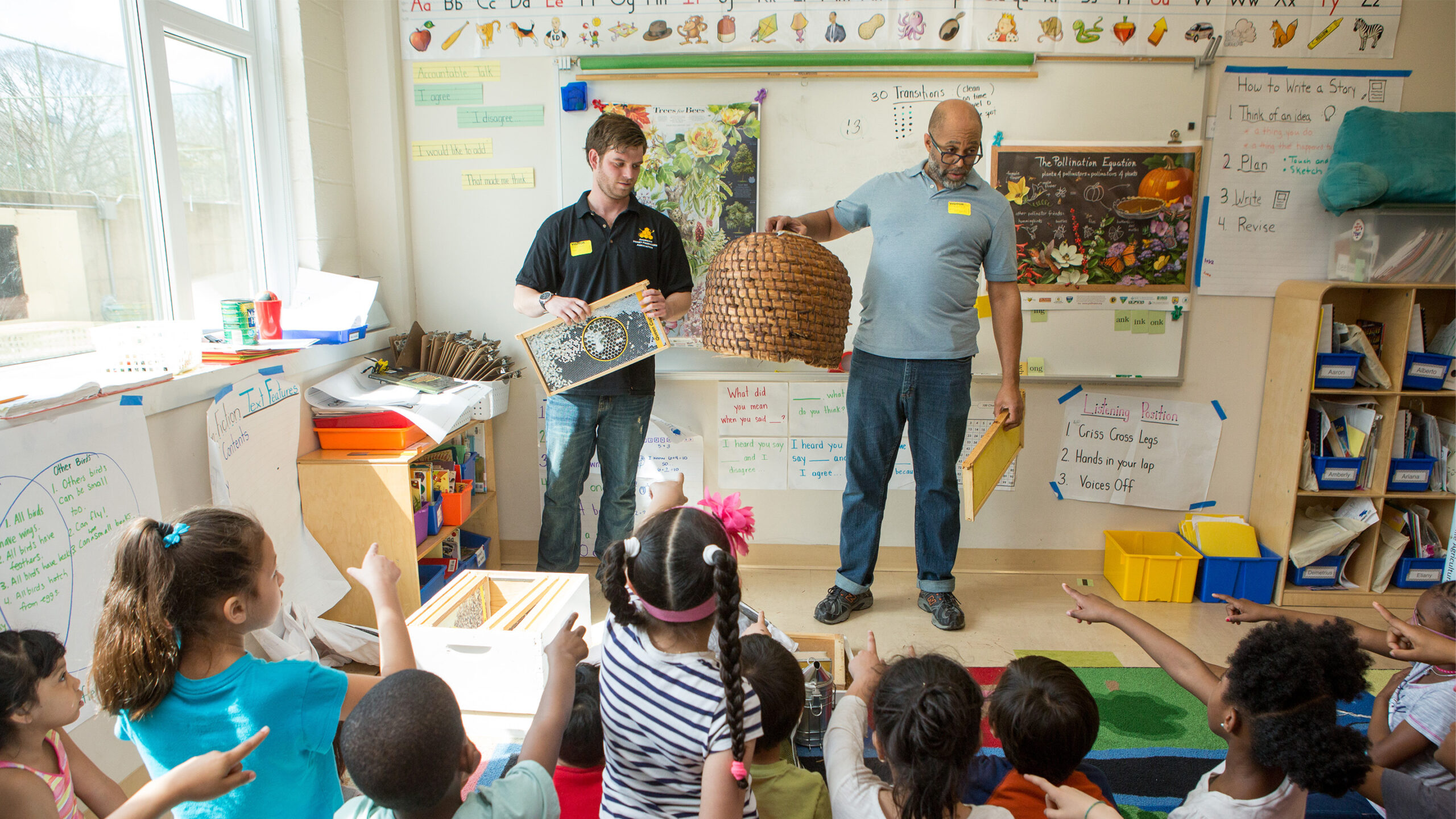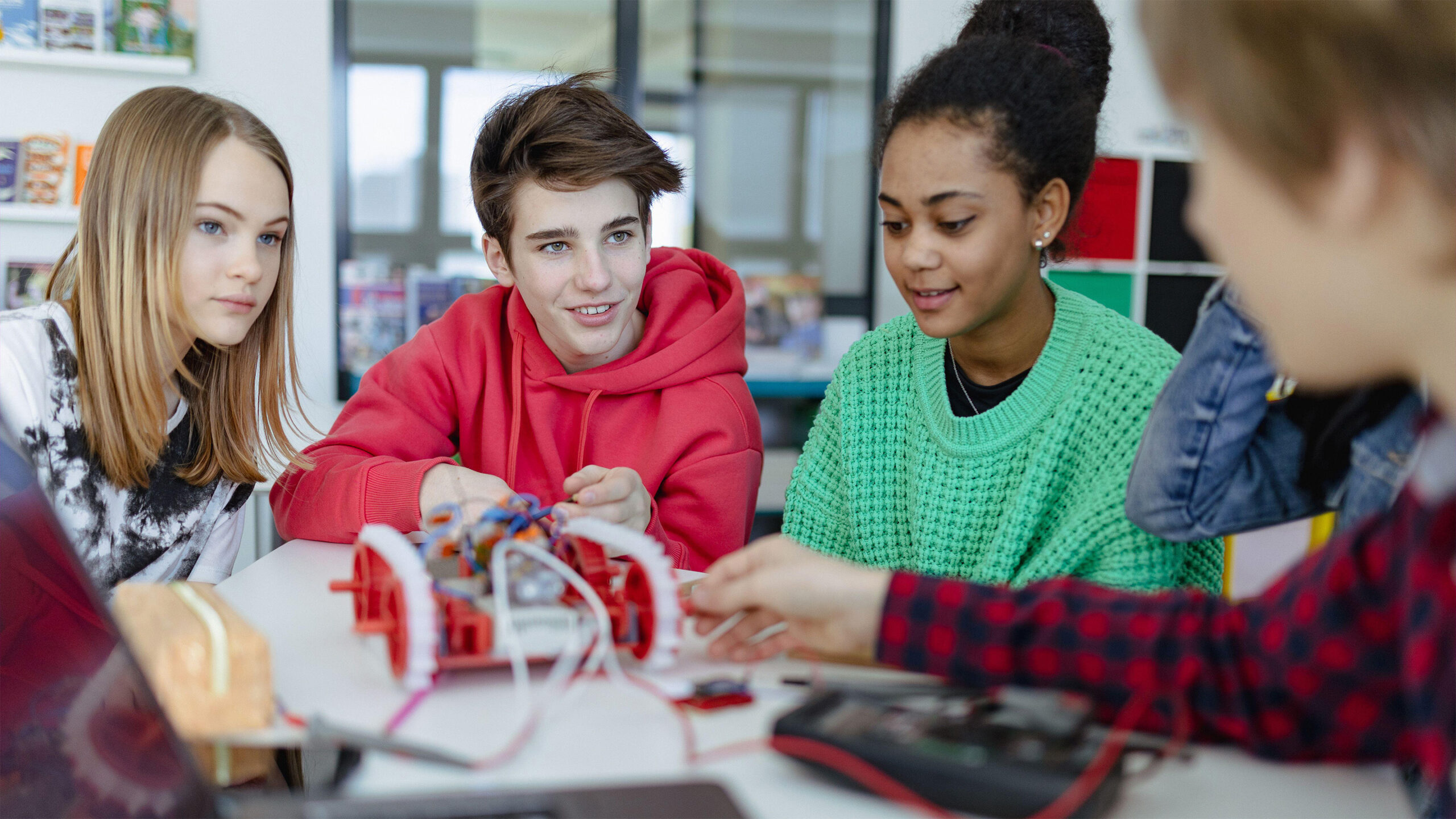[ad_1]
Sometimes, checks merely aren’t enough—significantly in science class, the place inquiry and reasoning are important skills for faculty college students to develop. Whereas multiple-choice and fill-in-the-blank checks can reveal knowledge, they may fall fast on assessing abstract, sophisticated skills like conceptual understanding and the pliability to make use of finding out to new circumstances.
“Take into account analysis as analogous to pictures. Similar to the outcomes on a examine, a picture is perhaps informative; nonetheless, no single {photograph} can current a whole portrayal of a state of affairs,” writes veteran educator and advertising and marketing guide Jay McTighe in ASCD. “What we would like is {a photograph} album of proof on scholar finding out, not a snapshot—a gaggle of numerous measures, appropriately aligned to numerous sorts of finding out outcomes that matter.”
Incorporating totally different assessments all via the faculty 12 months—like effectivity duties or initiatives—moreover sends an important message to varsity college students about finding out priorities. “If we declare to price essential pondering, ingenious problem-solving, oral communication, and the pliability to work efficiently in groups, then we now have to coach and assess these outcomes,” notes McTighe. All through the curriculum, when assessments consist principally of “single proper reply” checks, we’d inadvertently signal that “rote finding out and formulaic responses” are what we price most.
Within the meantime, together with a part of choice into assessments when doable can enhance scholar buy-in, says science teacher Amy Szczepanski, who decided to let her school college students “choose their very personal remaining and each factor about it—the subject, how they’d characterize their knowledge, and the best way they’d be graded.” The outcomes have been astounding, she writes, with school college students producing remaining initiatives ranging from a Minecraft model of DNA to a mission regarding the chemistry of photos.
From video initiatives to classroom discussions and debates, listed beneath are a diffusion of ingenious, collaborating assessments to take a look at in science class this 12 months.
Get in Character
Standard oral experiences have their place in science class, in actual fact, nevertheless oral assessments might also be pretty ingenious—significantly when school college students can act out, debate, or dramatize what they’ve realized.
In a unit on ecology, heart school teacher Jessica Guidry has school college students role-play as scientists who’ve been chosen to present on the United Nations. The UN has decided to “take away one biome to make room for the world’s rising human inhabitants,” and so the scholar scientists are tasked with “persuading the members of the UN to keep up their chosen biome alive.” Of their oral reveals, accompanied by visuals, school college students describe how their biome benefits the world, giving particulars on its wildlife.
Doc a Video
Video initiatives are versatile, skill-building, “and way more pleasing than writing a paper every time,” writes educator Jill Staake. How-to motion pictures, as an example, allow school college students to elucidate the steps to a course of “with enough component that someone watching can be succesful to repeat their approach and procure comparable outcomes,” Staake writes. Which may comprise a step-by-step data to re-creating a particular lab from class, and even one factor further abstract, like a “learn to photosynthesize” tutorial geared towards an viewers of crops. Or, in case your typical end-of-unit output is a written evaluation report, ponder letting school college students ship a video report in its place.
Another choice is a stop-motion video, the place school college students take repeated pictures of paper or cardboard cutouts shifting throughout the net web page, which lets them illustrate their understanding of subtle concepts.
video
Make Like a Sketch Artist
All through a lecture on ferns in his highschool biology class, highschool teacher John Dorroh noticed numerous school college students doodling in its place of taking notes. “When class was over, I requested one in every of many doodlers if I’d see his pocket e-book,” writes Dorroh. “I was flabbergasted to see that he’d made a sequence of spot-on sketches on the life cycle of ferns.”
In consequence, Dorroh decided to current his school college students the selection to be assessed by means of paintings all via the semester. They could create posters, detailed sketches, picture books, and additional. To tie the paintings significantly to what they realized in school, “they wanted to attach an Paintings Actuality Sheet that included 10 data from the content material materials for that aim which have been evident” of their paintings, Dorroh writes. “On a poster of a typical animal cell, as an example, they could write, ‘Animal cells have mitochondria which will be involved in energy manufacturing.’”
Be a Science Storyteller
When school college students are given the prospect to jot down creatively about science, they may make attention-grabbing and stunning connections. Middle school science teacher Anthony Cody has school college students write fast tales just a few group of astronauts surviving on a selected planet—Neptune, as an example. These tales allow them to showcase what they realized just a few planet’s atmosphere, temperature, gravity, and additional. To judge science school college students’ outputs, Dorroh recommends having them join a “Writing Actuality Sheet” and “underline the data from the content material materials for that aim, numbering every for easy identification.”
Furthermore astronaut voyages, Cody suggests numerous totally different ingenious writing prompts which will slot into science lessons—like a first-person account of a day throughout the lifetime of a particular animal or a story detailing the journey of a chew of meals by the physique.
Instead of writing extended experiences, school college students can “share their most important takeaways on a single piece of unpolluted paper,” writes educator Betsy Potash. On their one-pager, “school college students could embrace quotations, ideas, images, analysis, or key names and dates,” Potash writes, together with that “school college students keep in mind further after they’ve blended language and imagery.”
This practice forces school college students to distill essential ideas—and ponder learn to present them efficiently and concisely. Alternatively, break the subject into many parts, and ask school college students to create a one-pager for one subset of the material—then grasp the entire accomplished pages subsequent to at least one one other.
Talk about It Via Collectively
A well-structured classroom dialogue can provide a priceless various to guage scholar finding out. “My first foray into dialogue analysis involved the cell energy unit in my biology course,” writes highschool science teacher Rebecca Hall. Together with serving to Hall assess her school college students’ grasp of the material, discussions allowed school college students to “uncover, share understandings, and be taught” from each other, she writes.
To get started with dialogue assessments, Hall recommends selecting a few “meaty questions”—roughly six questions in a 90-minute interval. She tells her school college students the questions upfront, and they also each choose three or 4 of the six to focus on. On the day of the dialogue, “every scholar is named on for the questions they prepared, nevertheless school college students would possibly participate in all questions.” Hall opts to not deduct elements when school college students categorical ideas which will be incorrect; in its place, school college students can solely earn elements all through the dialogue.
Design Collaborative Posters
For a playful spin on a science class staple, ponder a group poster mission. “It’s a fantastic means for faculty college students to point off what they realized—and it might be pleasing,” writes educator Bethany Lau; the group format permits kids to assemble on each other’s knowledge and correct misconceptions their buddies might have regarding the supplies. In groups of two to 4, have school college students use numerous colored markers to create their posters in school, each on poster board, constructing paper, or huge dry-erase boards. Each small group is perhaps assigned a particular topic from the lesson—like a particular planet or fully totally different state of matter. Afterward, school college students can present their posters to the entire class.
Educate It to Youthful Kids
To level out their mastery of a topic, Cody asks his heart school school college students to jot down and illustrate science-related storybooks for youthful school college students—like “a youngsters’s e e-book explaining acids and bases so {{that a}} fourth grader would possibly understand, using examples of chemical reactions, and diagrams displaying how the reactions occur.” Alternatively, school college students could go to an early-grade classroom to ship mini-lessons on what they’ve realized—and create short-term assessments or quizzes to maneuver out, suggests highschool teacher Jason Abril.
Educating as analysis can work all via a unit, not merely on the end. “As my school college students examine a given topic, they have to translate, practice, and develop actions for youthful school college students on the similar topic,” writes science teacher Tracey Muise—rising a “drawback subject” of science-related station actions for youthful school college students at their school.
SHARE YOUR STRATEGIES!
Is there one other sort of science analysis that has labored properly in your classroom? Inform us throughout the suggestions!
[ad_2]
Provide hyperlink



